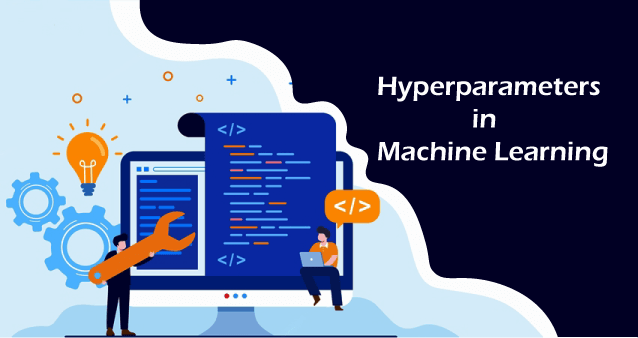Hyperparameters in Machine Learning Explained
 Mouri Roy
Mouri Roy
To improve the learning model of machine learning, there are various concepts given in machine learning. Hyperparameters are one of such important concepts that are used to improve the learning model. They are generally classified as model hyperparameters that are not included while setting or fitting the machine to the training set because they refer to the model selection task. In deep learning and machine learning, hyperparameters are the variables that you need to apply or set before the application of a learning algorithm to a dataset.
What are Hyperparameters?
Hyperparameters are those parameters that are specifically defined by the user to improve the learning model and control the process of training the machine. They are explicitly used in machine learning so that their values are set before applying the learning process of the model. This simply means that the values cannot be changed during the training of machine learning. Hyperparameters make it easy for the learning process to control the overfitting of the training set. Hyperparameters provide the best or optimal way to control the learning process.
Hyperparameters are externally applied to the training process and their values cannot be changed during the process. Most of the time, people get confused between parameters and hyperparameters used in the learning process. But parameters and hyperparameters are different in various aspects. Let us have a brief look over the differences between parameters and hyperparameters in the below section.
Parameters Vs Hyperparameters
These are generally misunderstood terms by users. But hyperparameters and parameters are very different from each other. You will get to know these differences as below −
Model parameters are the variables that are learned from the training data by the model itself. On the other hand, hyperparameters are set by the user before training the model.
The values of model parameters are learned during the process whereas, the values of hyperparameters cannot be learned or changed during the learning process.
Model parameters, as the name suggests, have a fixed number of parameters, and hyperparameters are not part of the trained model so the values of hyperparameters are not saved.
Classification of Hyperparameters
Hyperparameters are broadly classified into two categories. They are explained below −
Hyperparameter for Optimization
The hyperparameters that are used for the enhancement of the learning model are known as hyperparameters for optimization. The most important optimization hyperparameters are given below −
Learning Rate − The learning rate hyperparameter decides how it overrides the previously available data in the dataset. If the learning rate hyperparameter has a high value of optimization, then the learning model will be unable to optimize properly and this will lead to the possibility that the hyperparameter will skip over minima. Alternatively, if the learning rate hyperparameter has a very low value of optimization, then the convergence will also be very slow which may raise problems in determining the cross-checking of the learning model.
Batch Size − The optimization of a learning model depends upon different hyperparameters. Batch size is one of those hyperparameters. The speed of the learning process can be enhanced using the batch method. This method involves speeding up the learning process of the dataset by dividing the hyperparameters into different batches. To adjust the values of all the hyperparameters, the batch method is acquired. In this method, the training model follows the procedure of making small batches, training them, and evaluating to adjust the different values of all the hyperparameters. Batch size affects many factors like memory, time, etc. If you increase the size of the batch, then more learning time will be needed and more memory will also be required to process the calculation. In the same manner, the smaller size of the batch will lower the performance of hyperparameters and it will lead to more noise in the error calculation.
Number of Epochs − An epoch in machine learning is a type of hyperparameter that specifies one complete cycle of training data. The epoch number is a major hyperparameter for the training of the data. An epoch number is always an integer value that is represented after every cycle. An epoch plays a major role in the learning process where repetition of trial and error procedure is required. Validation errors can be controlled by increasing the number of epochs. Epoch is also named as an early stopping hyperparameter.
Hyperparameter for Specific Models
Number of Hidden Units − There are various neural networks hidden in deep learning models. These neural networks must be defined to know the learning capacity of the model. The hyperparameter used to find the number of these neural networks is known as the number of hidden units. The number of hidden units is defined for critical functions and it should not overfit the learning model.
Number of Layers − Hyperparameters that use more layers can give better performance than that of less number of layers. It helps in performance enhancement as it makes the training model more reliable and error-free.
Conclusion
Hyperparameters are those parameters that are externally defined by machine learning engineers to improve the learning model.
Hyperparameters control the process of training the machine.
Parameters and hyperparameters are terms that sound similar but they differ in nature and performance completely.
Parameters are the variables that can be changed during the learning process but hyperparameters are externally applied to the training process and their values cannot be changed during the process.
There are various methods categorized in different types of hyperparameters that enhance the performance of the learning model and also make error-free learning models.
Subscribe to my newsletter
Read articles from Mouri Roy directly inside your inbox. Subscribe to the newsletter, and don't miss out.
Written by
